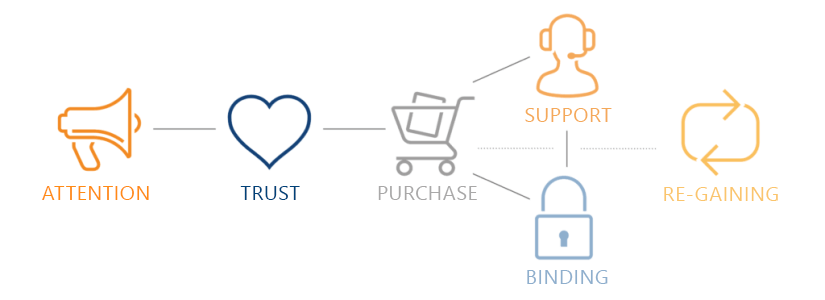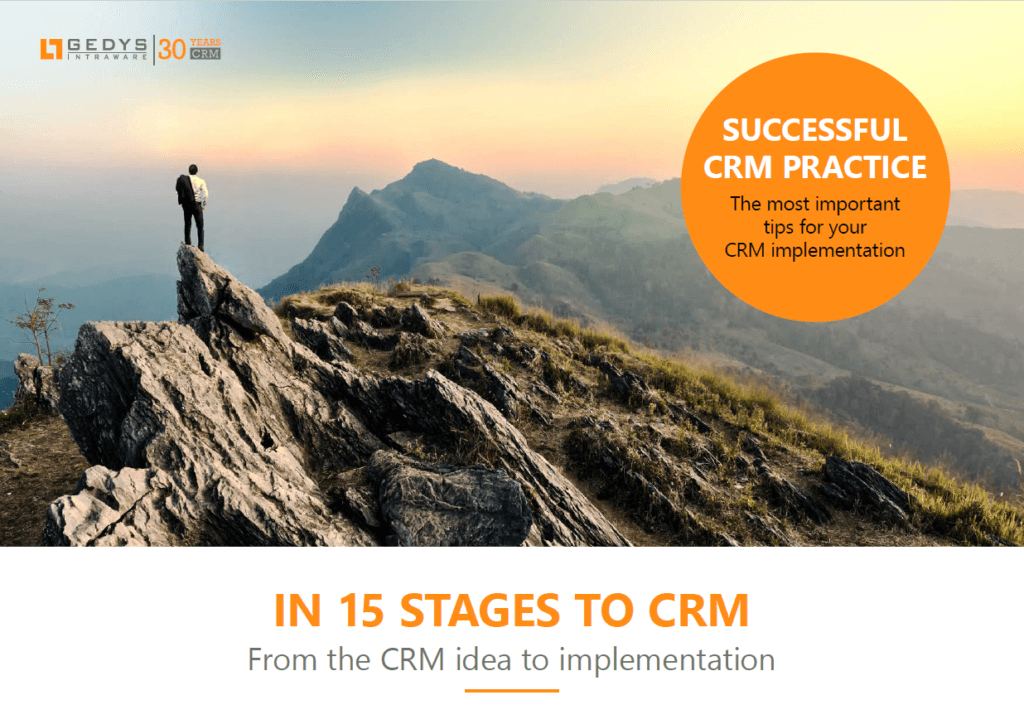Customer Lifecycle (customer loyalty cycle)
Build, strengthen, extend customer relationships
The Customer Lifecycle (also known as the customer loyalty cycle) describes the relationship between the customer and the company. In doing so, new customers are gained and relationships are intensified. But not only, former customers are also to be reclaimed. In the best case, a customer, transparently thanks to a CRM software, goes through all 6 phases of the customer lifecycle.
6 phases of the customer lifecycle
1. Attention
New potential customers consciously perceive a company and the first “touch” comes about. Often it is marketing measures that draw the customer’s attention.
For evaluation and planning, it is important to keep a close track of the media or channels on which the points of contact have taken place in order to create a positive user experience.
2. Building trust
The second phase of the Customer Lifecycle is about really convincing the customer after the first incentives. The customer needs the right information for him in order to be able to make a decision. Whether by phone, e-mail or website – the first real contact with the customer must last in a positive way.

3. Purchase
The first important milestone: the customer decides to buy a product. Now the entire purchase process must run smoothly. Any delay and difficulty, however small, can ensure that this was the first and last purchase of this customer.
That’s why, even if something doesn’t work perfectly, the right communication with the customer is crucial. If he feels well looked after, he is satisfied despite possible small problems.
4. After purchase, before purchase, the
For the first moment, the customer is provided with everything he wanted. But now it is important to bind him firmly to the company. The goal is always to build a sustainable relationship. Communication must therefore continue, as it did before the purchase.
The customer must have a contact person for all his/her needs – whether feedback, questions, complaints or requests. All issues must be adequately responded to.
5. Binding
Now it’s about repeating a customer’s first purchase. The business relationship is to be further developed. Storing and analyzing customer data helps to optimize offers and address customers individually in the future.
In this way, the customer feels the appreciation he needs for future purchases. CRM software and tools help maintain a 360° view of all activities.
6. Recovery
It can happen that once active customers become former customers. A former customer is the one who has not purchased any products for a long period of time. This may be the result, among other things, of a diminished care.
With individual mailings and offers, incentives can be created that also reactivate former customers. For long-lasting, personal support, companies rely on CRM systems. This allows all activities and operations with customers to be monitored and influenced.
The customer lifecycle plays an important role in customer loyalty. New customers need to be convinced – existing customers must be looked after all in all round. A CRM system will help you with this.

